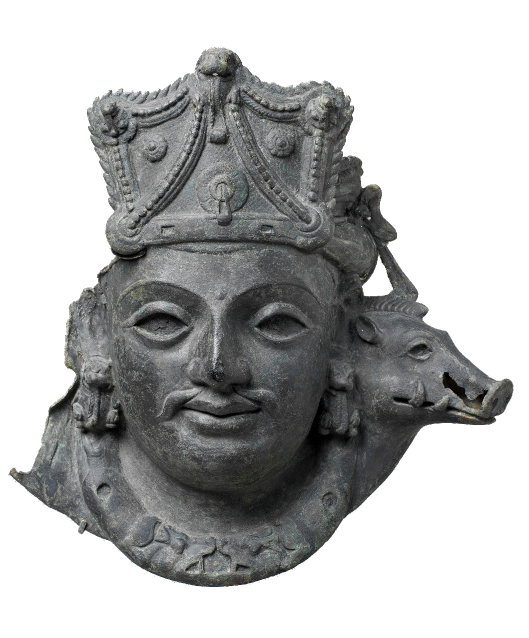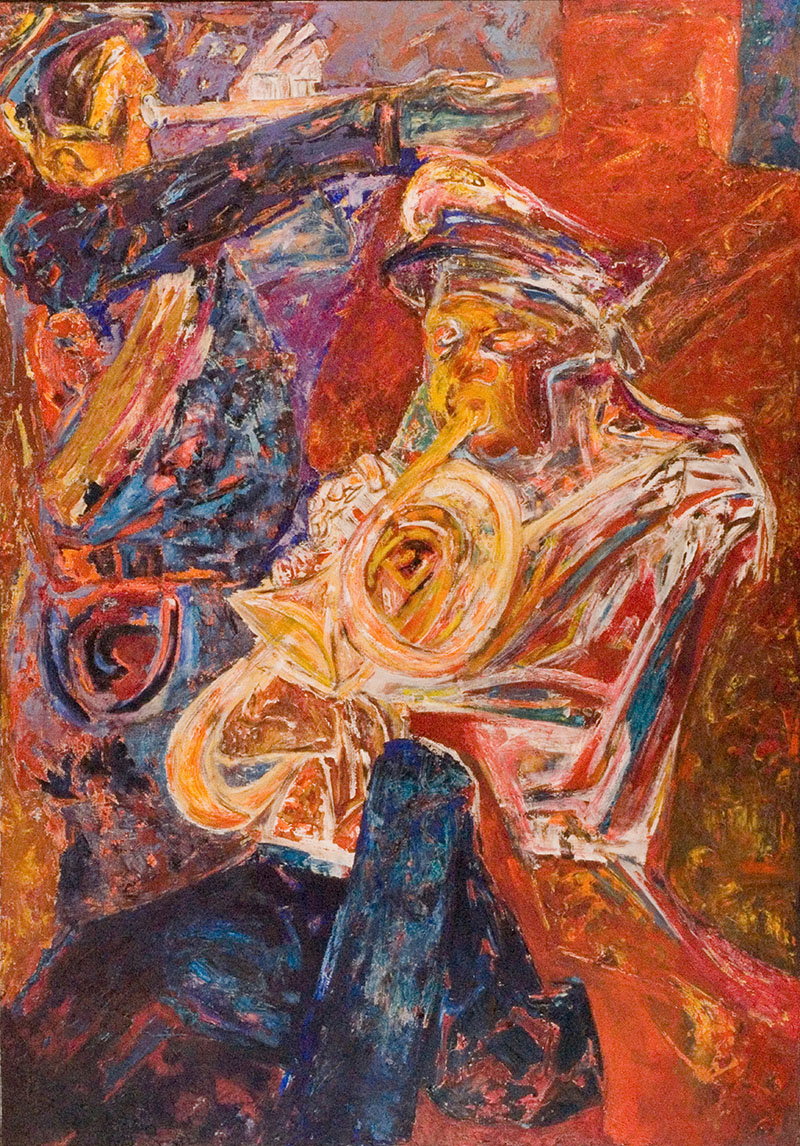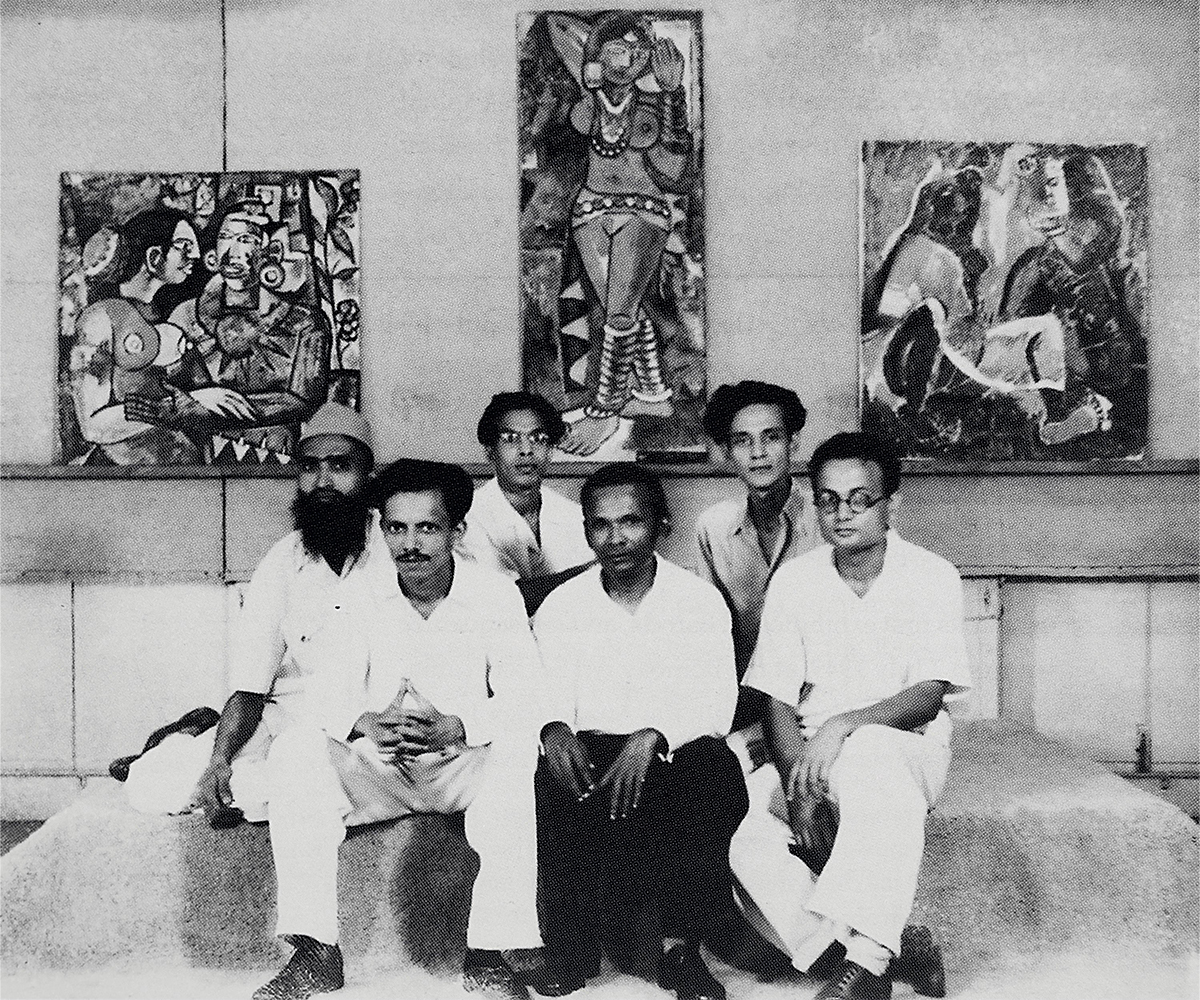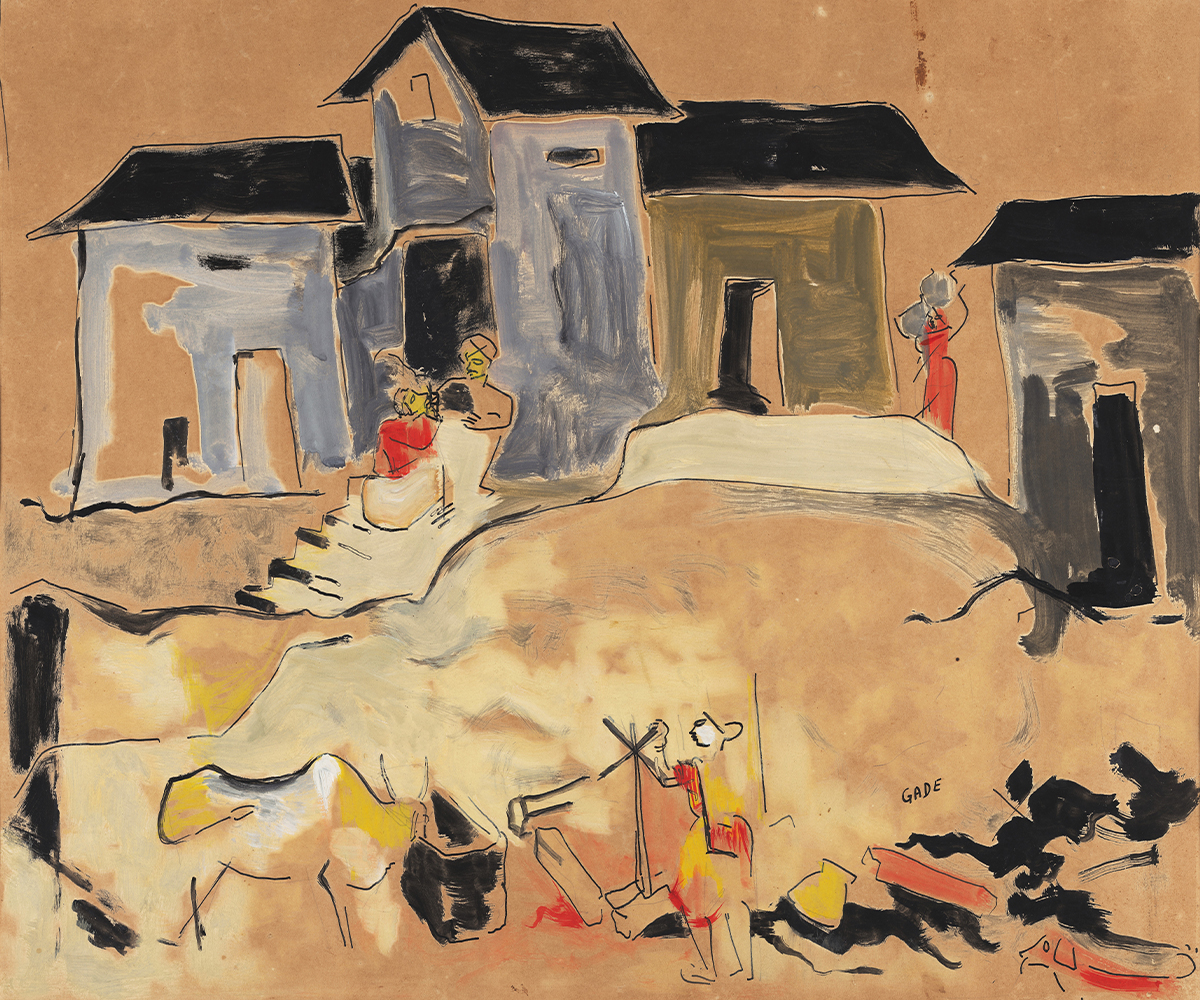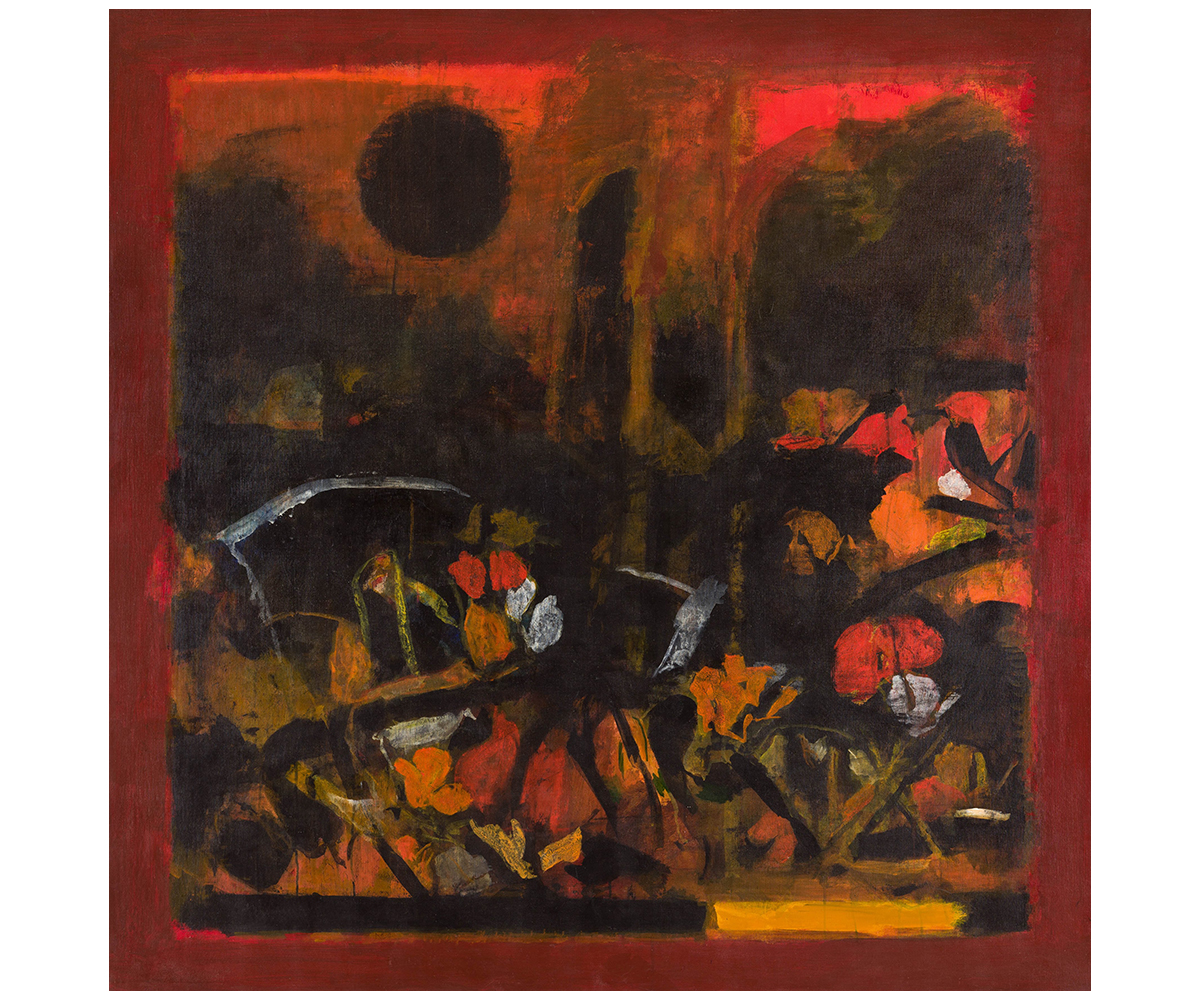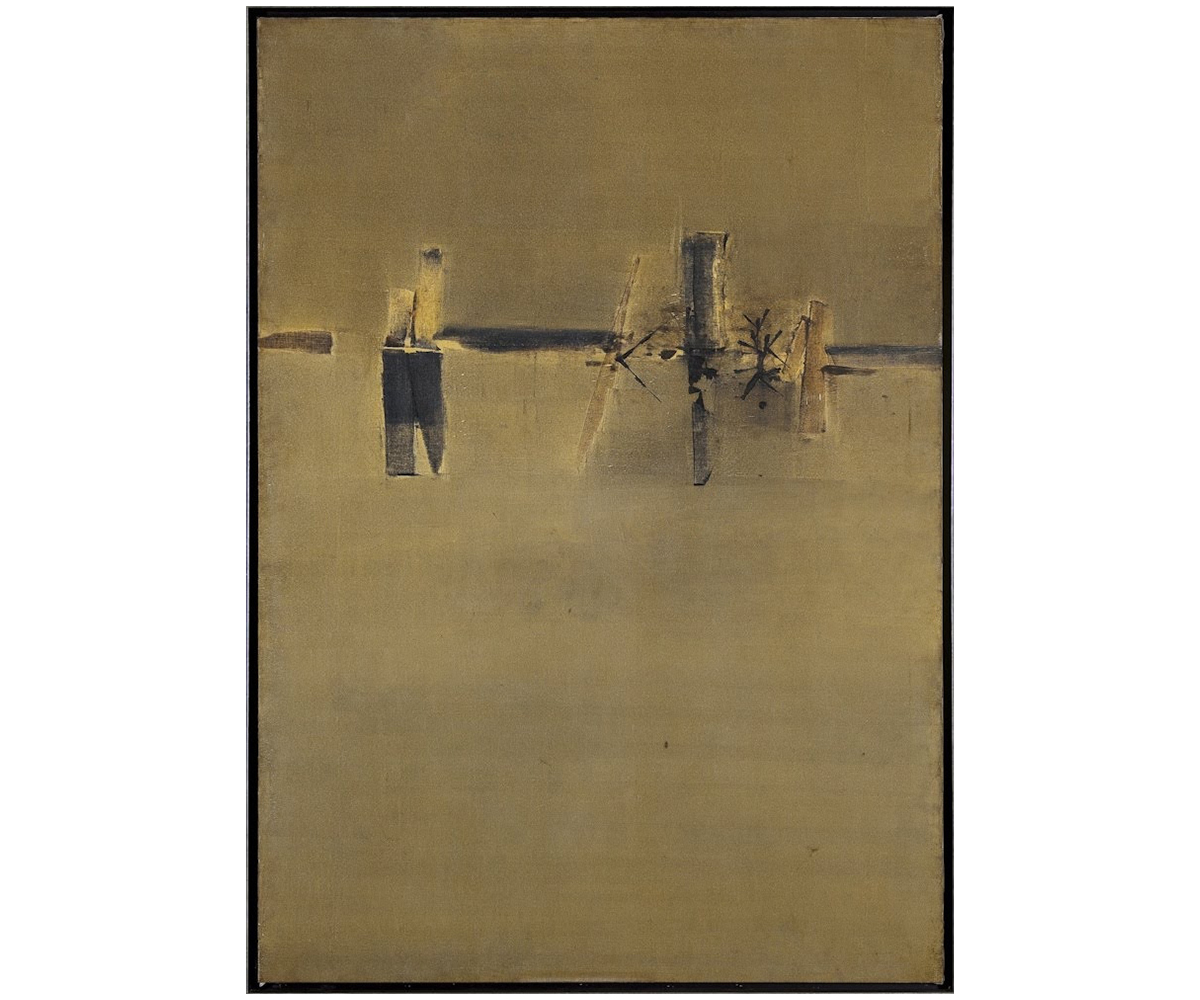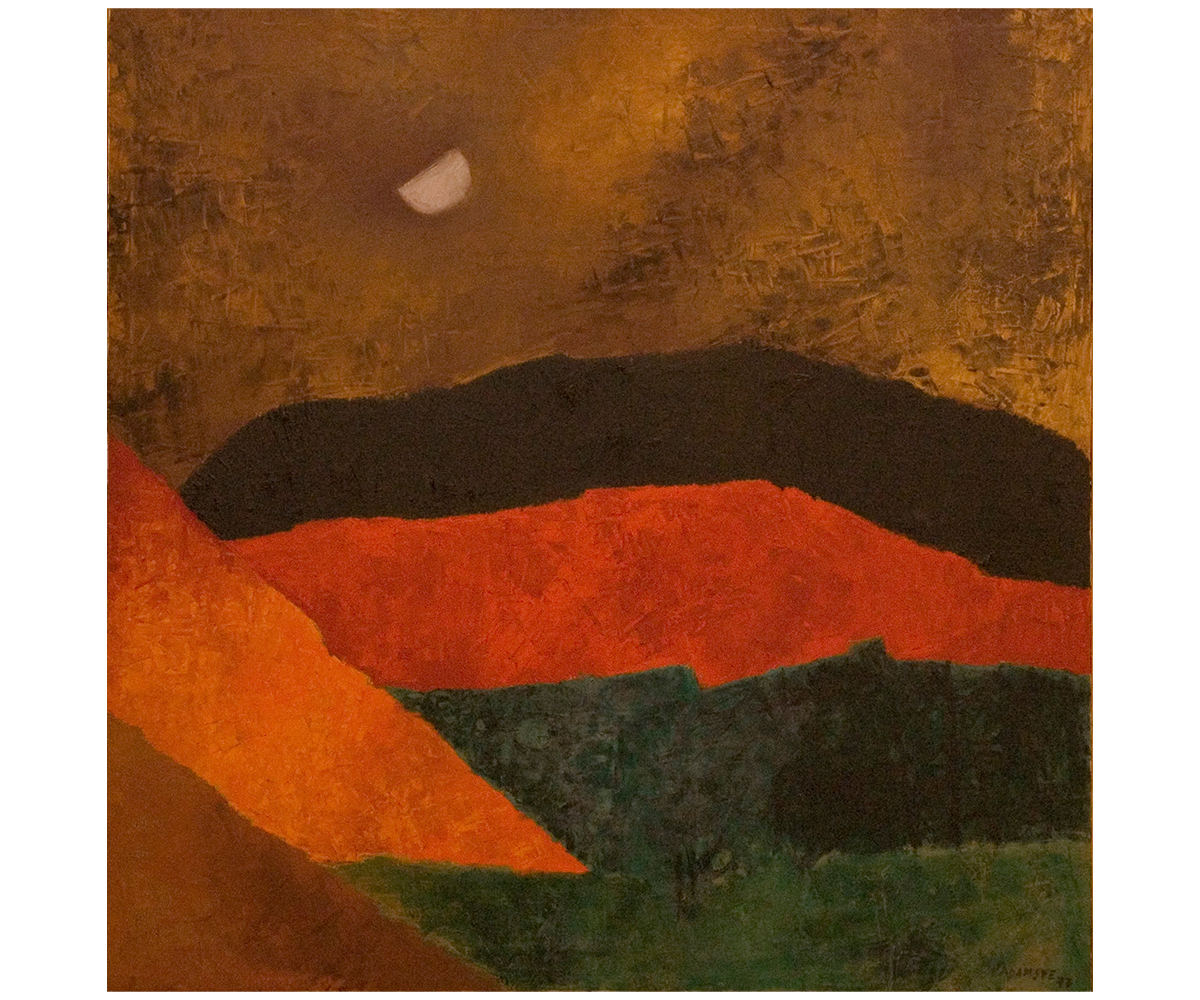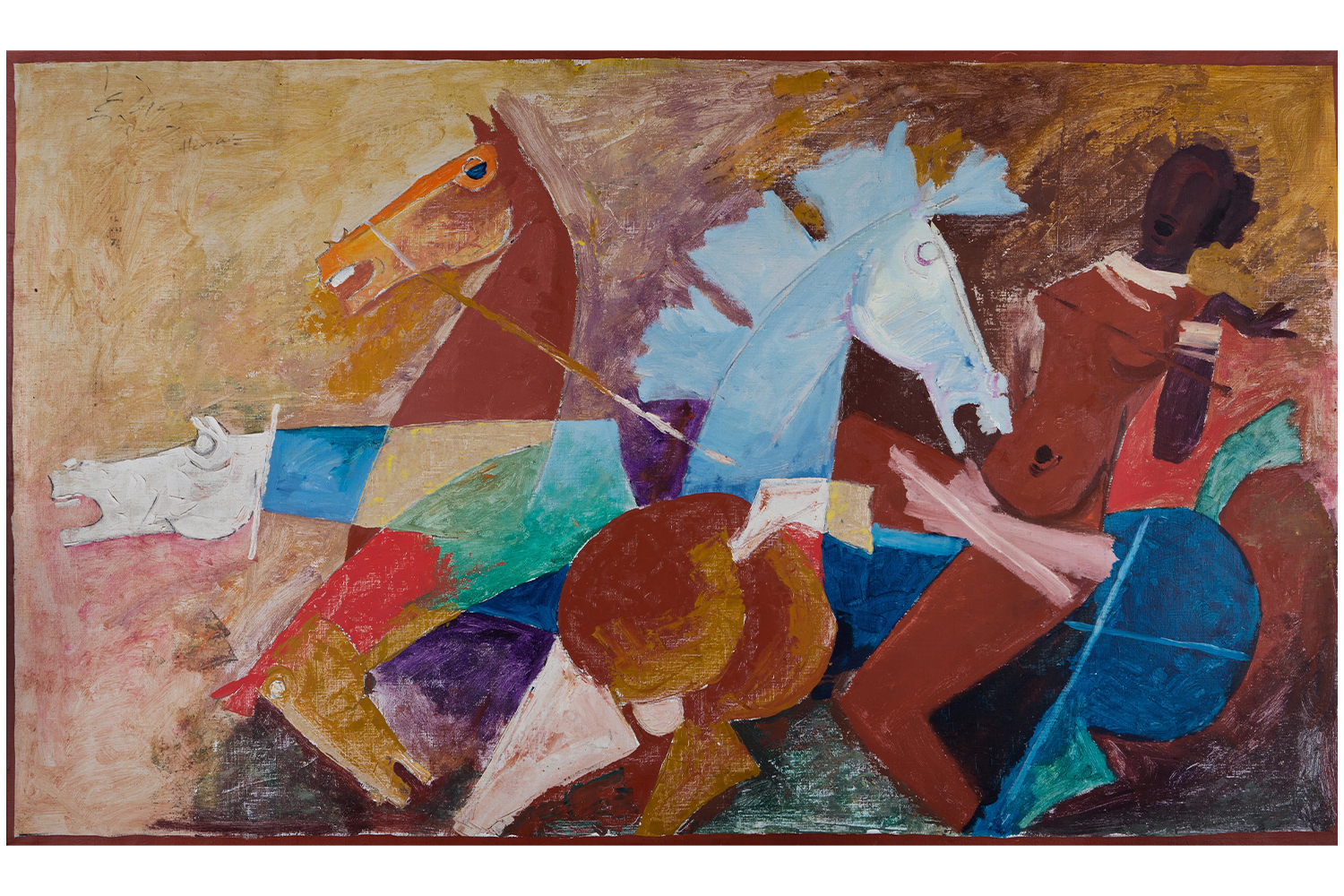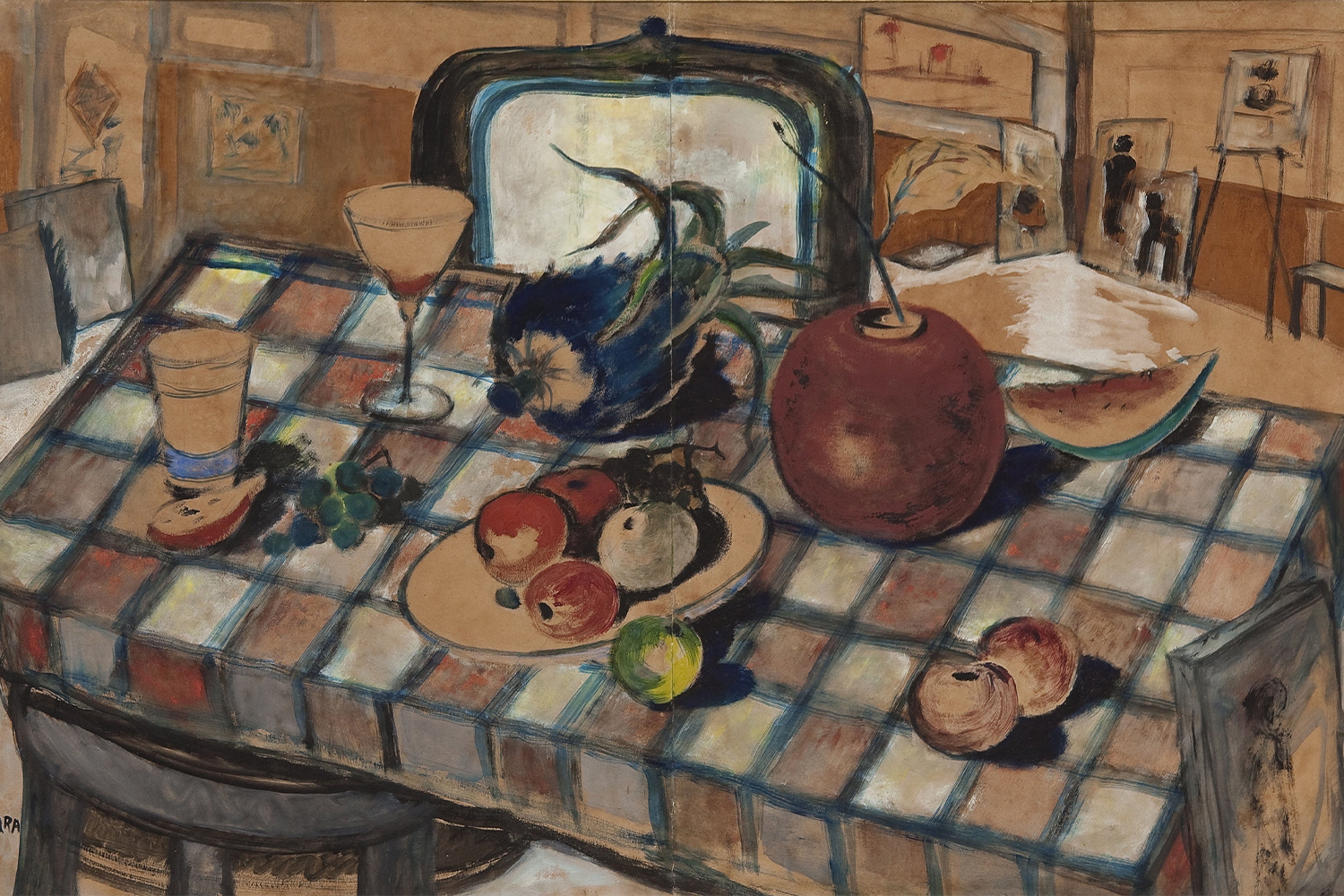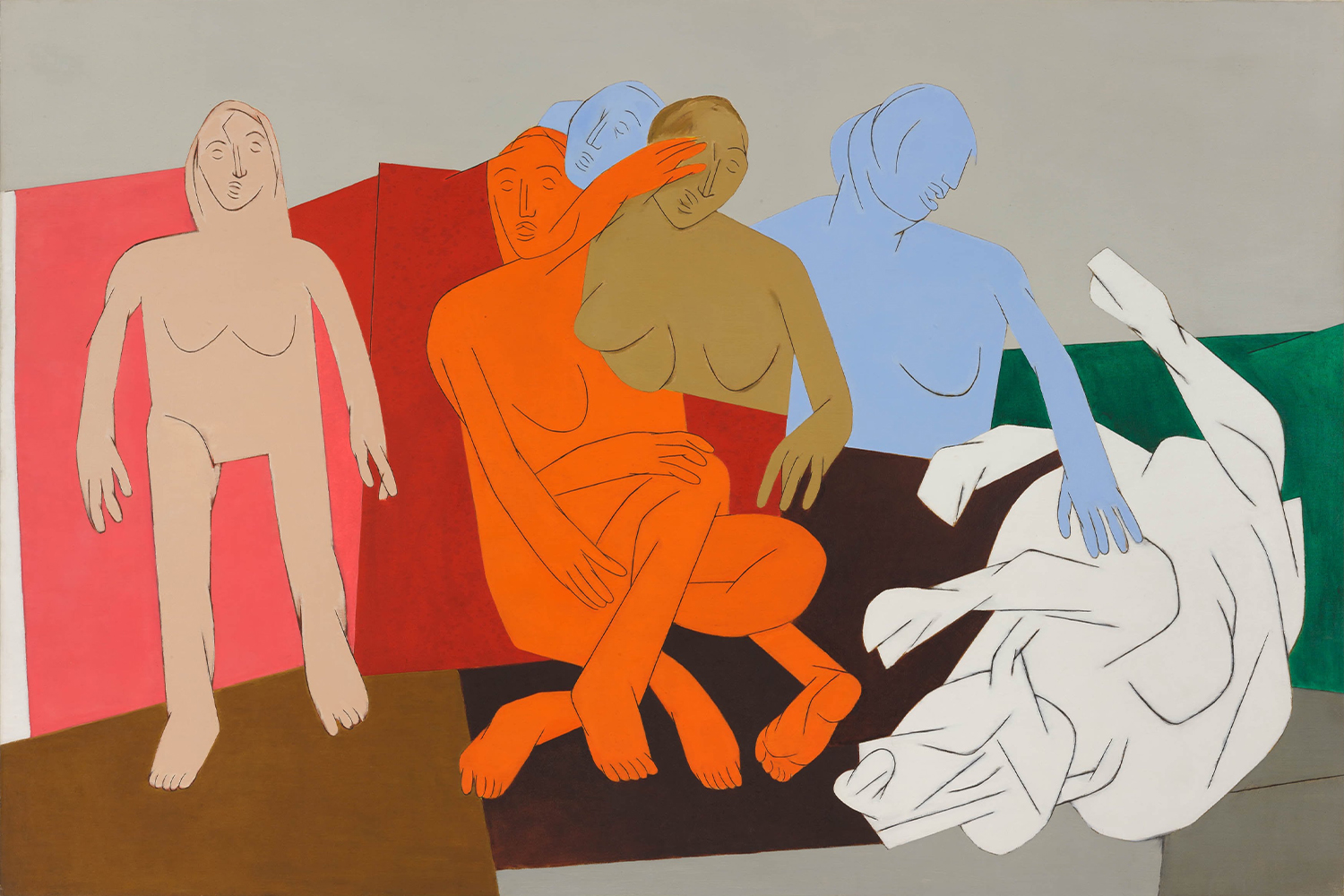ARTICLE
Bombay Progressive Artists’ Group
Despite these differences, the artists were unified in their commitment to the principles of the PAG and its focus on Formalist traditions. The group shared an anti-imperialist outlook towards art and a need to bridge the gap between art and the everyday lives of people. They used the idioms of Modern art developing in the West to portray themes relevant to Indian realities and drawing on South Asian heritage. This resulted in a synthesis of folk and tribal art motifs, a vibrant colour palette and a favouring of emotive and Expressionistic power over anatomical or optical correctness of forms.
Among the group’s earliest patrons were certain influential Jewish immigrants who had arrived in Bombay from Europe: Walter Langhammer, Rudolph von Leyden and Emmanuel Schlesinger were notable in providing the PAG with the space and accessibility to converge and devise their manifesto. The group’s initial impetus came from their disillusionment with the arbitrary decisions made by the art establishment of their time. In 1947, Souza, Ara and Raza, along with the art critic Rashid Husain, set up an independent and transparent judging committee to select emerging artists for their upcoming art exhibitions. The group held its first collective exhibition in 1949 at Rampart Row in Mumbai, then a popular venue for art installations and exhibitions, to critical success. However, after the first exhibition, the members also announced a change in their manifesto, setting aside their Leftist ideals of bridging the distance between artists and the public, and reinstated their commitment to developing a new aesthetic for Indian Modern art.
By the 1950s, the PAG had grown to include artists such as VS Gaitonde, Akbar Padamsee, Krishen Khanna and Tyeb Mehta. These artists introduced elements from East Asian art, including fifteenth-century Japanese ink wash painting and medieval Korean landscape painting, highlighting the contrast between the rural and industrial realities in India through village and pastoral scenes as well as portrayals of urban landscapes and populations. While this was a deviation from the themes originally undertaken by the PAG, the approach was understood as part of the group’s continuing legacy.
Soon after the group’s joint exhibition with the Calcutta Group in 1951, Souza, Raza and Bakre relocated to Europe, and the PAG was partially dissolved. Rather than undermining the group’s original nation-building project, as is sometimes argued, the artists’ move was another step towards the global, transnational role the group had originally envisioned for itself. The group was not burdened by the nationalism of other Indian art movements such as Revivalism, nor did they wish to return to the old ideals of European Realism or solely imitate Western art movements. While inspired by artistic currents and practitioners in Europe and the USA, artists such as Raza and Souza absorbed these influences to deepen their connection to Indian themes and sensibilities in their paintings. Husain, who had remained in India, also exemplified the same transnationalism in his fusion of Cubism, South Asian miniature painting traditions and Hindu iconography.
Over the next few years, each of these artists developed their own postcolonial vocabulary as Modern Indian artists. Raza, Souza and Bakre’s move, Husain’s own travels and exhibitions across the world, and the continued support of patrons such as Leyden meant that despite the group’s disbanding in 1956, its members were instrumental in furthering the visibility and relevance of Indian Modern art in Europe through exhibitions in cities such as Zurich, Paris and London. Buoyed by the art market in Europe and India, these artists heralded the first wave of internationalism among Indian artists as the country’s foremost progressive painters. Their works began to fetch record prices on the global stage during their lifetimes, with their market value only growing posthumously.
In 2018, Asia Society, New York organised a landmark retrospective of the Progressive Artists’ Group. The exhibition included the works of FN Souza, HA Gade, KH Ara, MF Husain and SK Bakre, as well as later members and close associates such as VS Gaitonde, Krishen Khanna, Ram Kumar, Akbar Padamsee, Tyeb Mehta and Mohan Samant. It was curated by the art curator and educator Zehra Jumabhoy and Boon Hui Tan, the director of the Asia Society in New York.
Bibliography
Artisera. “The Progressive Artists’ Group And Its Impact on Indian Modern Art,” 2019. https://www.artisera.com/blogs/expressions/the-progressive-artists-group-and-its-impact-on-indian-modern-art.
Artsy. “The Progressive Revolution: Modern Art for a New India.” Accessed September 4, 2020.
https://www.artsy.net/show/asia-society-the-progressive-revolution-modern-art-for-a-new-india
Jumabhoy, Zehra, Karin Zitzewitz and Sonal Khullar. “The Progressive Artists’ Group & the ‘Idea of India’.” Borderlines. October 9, 2019. https://borderlines-cssaame.org/posts/2019/10/7/the-progressive-artists-group-amp-the-idea-of-indianbsp.
Kapur, Geeta. When was Modernism: Essays on Contemporary Cultural Practice in India. Chennai: Tulika Books, 2000.
Lokhandwala, Arshiya. “After Midnight: Indian Modernism to Contemporary India, 1947/1997.” Queens Museum, 2015. http://www.queensmuseum.org/wp-content/uploads/2015/04/After%20Midnight_Brochure_Web.pdf.
Mitter, Partha. Indian Art. Oxford: Oxford University Press, 2001.
Noor, Tausif Amin. “The Legacy of the Progressive Artists Group.” Sotheby’s, June 7, 2019.
https://www.sothebys.com/en/articles/the-legacy-of-the-progressive-artists-group.
Seervai, Shanoor. “As It Turns 50, Gallery Chemould Celebrates Its Legendary Past.” The Caravan, 2014. https://caravanmagazine.in/reviews-and-essays/dreamers.
Small, Zachary. “The Plurality and Progressivism of India’s Modern Art Revolution.” Hyperallergic, October 29, 2018.
https://hyperallergic.com/462128/the-progressive-revolution-modern-art-for-a-new-india-asia-society-museum/.
